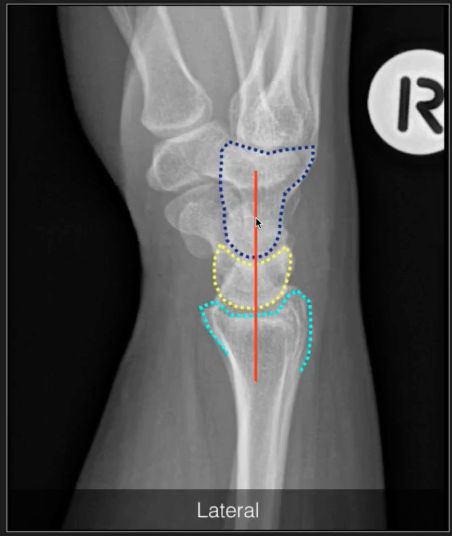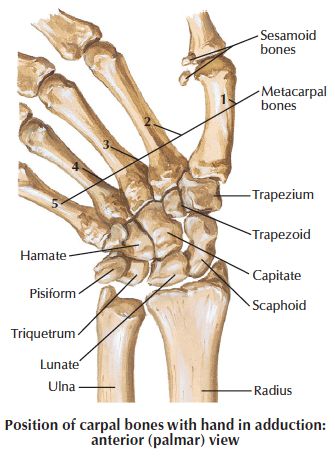Difference between revisions of "RADIOGRAPH-LATERAL WRIST"
From NeuroRehab.wiki
(Imported from text file) |
(Imported from text file) |
||
| Line 1: | Line 1: | ||
[[Summary Article|<h5>'''SUMMARY'''</h5>]] | [[Summary Article|<h5>'''SUMMARY'''</h5>]] | ||
<br/>1. Remember that you do not see the <i>first row of bones - </i>scaphoid & | <br/>1. Remember that you do not see the <i>first row of bones - </i>scaphoid & trapezium, but the <i>second row - </i>lunate & capitate. | ||
<br/>2. The lunate appears as a <i>moon shaped bone. </i> | <br/>2. The lunate appears as a <i>moon shaped bone. </i> | ||
<br/>3. Important to detect SCAPHO-LUNATE DISLOCATION. | <br/>3. Important to detect SCAPHO-LUNATE DISLOCATION. | ||
Revision as of 12:45, 27 December 2022
SUMMARY
1. Remember that you do not see the first row of bones - scaphoid & trapezium, but the second row - lunate & capitate.
2. The lunate appears as a moon shaped bone.
3. Important to detect SCAPHO-LUNATE DISLOCATION.


Image: Case courtesy of Dr Andrew Dixon, Radiopaedia.org. From the case rID: 43305 [Accessed 18 Apr. 2020].
Reference(s)
R.M.H McMinn (1998). Last’s anatomy: regional and applied. Edinburgh: Churchill Livingstone.
Gray, H., Carter, H.V. and Davidson, G. (2017). Gray’s anatomy. London: Arcturus.